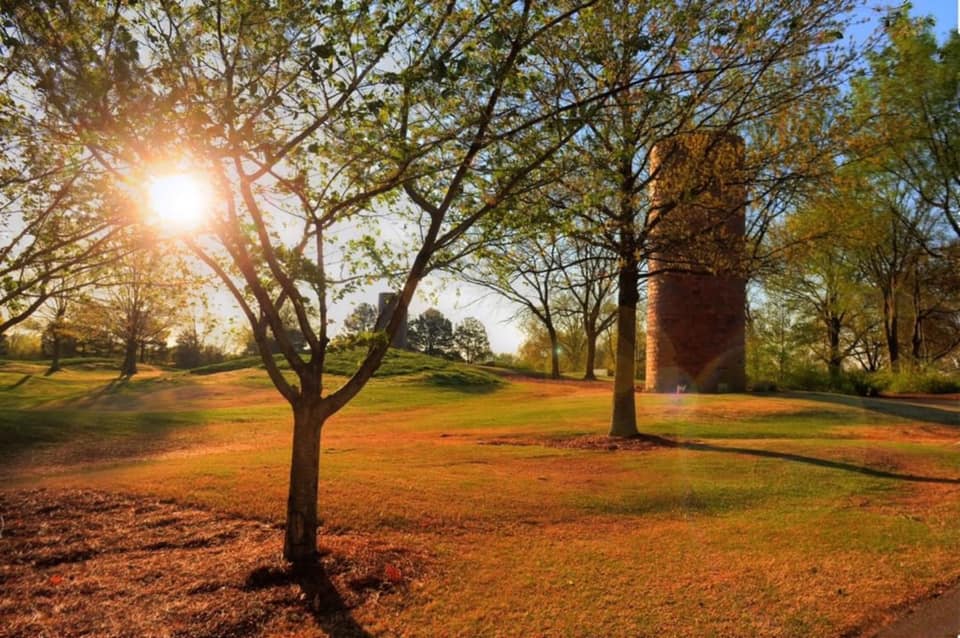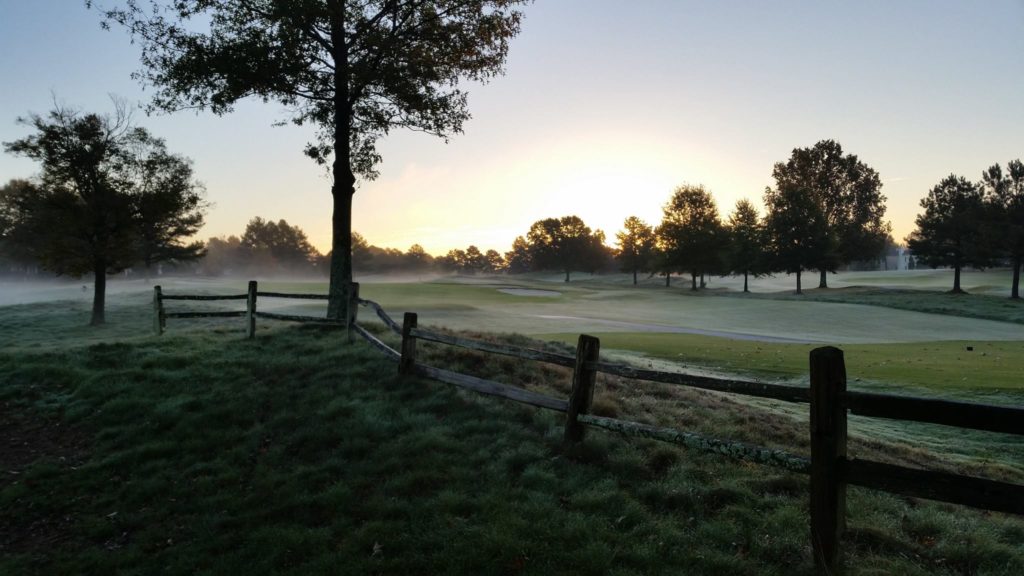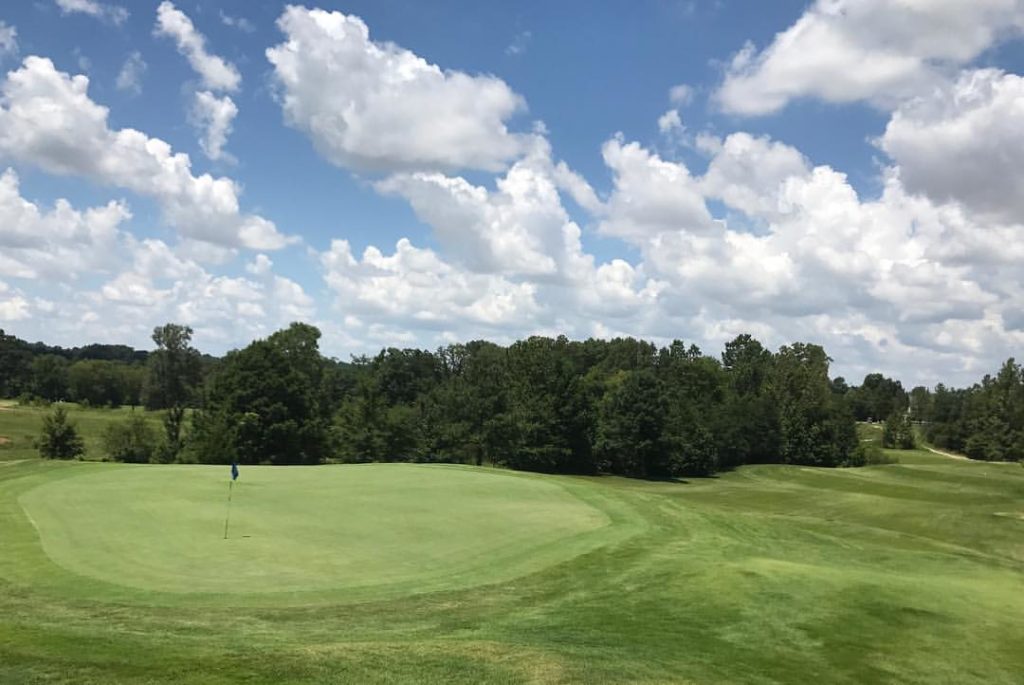
There is plenty to do in Memphis, where the Mississippi River meets the southwestern corner of Tennessee. It’s primarily known for its music – Memphis is the Home of the Blues, the Birthplace of Rock and Roll, and the site of Graceland, residence and final resting place of Elvis Presley.
The city is also famous as the home base for Federal Express, for its contribution to the civil rights movement, its barbeque, for Beale Street and the Liberty Bowl, for the fourth largest pyramid in the world, and for group of ducks that swim in the fountain and live on the roof of the stately Peabody Hotel.
A recent visit to the region showed how golf in this area has become another draw to a municipality that considers itself the “entertainment center of the Mid-South.”
We were lucky enough to play one of the South’s finest courses while in Memphis – TPC Southwind, the home of the FedEx St. Jude Championship on the PGA Tour. The tournament is set for Aug. 11-14 and is the first of the three events of the FedEx Cup Playoffs. The top 125 players in the PGA Tour’s season-long points race not playing on the LIV Golf Tour earned spots in the field.

TPC Southwind
Testy Southwind exudes southern charm
Opened in March 1988 and host to the FedEx St. Jude Championship since 1989, TPC Southwind was one of first golf courses in Tennessee to earn Audubon Cooperative Sanctuary Program certification.
The track was built on a dairy farm; two grain silos and a windmill still stand on the property. As part of a recent renovation, 22 acres of the course were converted to native areas, which enabled the conservation of water, fuel and chemicals, while enhancing wildlife habitat.
TPC Southwind’s championship layout serves as the centerpiece of a lush, gated community, and the acreage around the course in southeast Memphis boasts some grand homes. But don’t get distracted – this track is festooned with 94 sand bunkers and 10 water hazards, so be sure to bring your “A” game to Southwind.
The course, designed by Ron Prichard with former PGA Tour professionals Hubert Green and Fuzzy Zoeller lending their expertise as consultants, stretches across 240 acres of Tennessee countryside. Each of the 18 holes was meticulously crafted by Prichard to balance playability, strategy and challenge, all with stunning beauty. The result is a compelling test of golf that exhilarates, confounds, inspires, and delights, sometimes all at the same time.
“The first thing that comes to mind is the variety of the holes and how they can be difficult for pros and yet fun for the membership,” Zoeller said of his co-design. “There’s a lot of character to the golf course.”
For the professionals and those looking to get beat up from the tips, TPC Southwind plays 7,244 yards as a par-70 but most players will tackle this course from the regular tees, which offer plenty of challenge at 6,509 yards and a par-71. Tee boxes and fairways on the course are Zoysia, with the rough and greens Bermuda.
Many of Southwind’s more ballyhooed holes are on its back nine, but there are several holes on the front that demand your attention. The 554-yard, par-5 third makes you work the ball to the left or right of a huge tree in the middle of the fairway about 90 yards off the green.
No. 5 plays as a 485-yard par-4 from the tournament tees. Better yet, head to the players’ tee – which are normally ahead of the tournament tees – and play the hole as a par-5; neither option is easy because of the hole’s sharp dogleg-right shape and its narrow green protected by sunken bunkers on its left flank.
The sixth (at 445 yards) and the seventh (482) are long par-4s that require great shot-making skills and length to reach the putting surface in regulation. No. 9, another long two-shotter, is a dogleg-right with a narrow landing area that sets the tone for the back side and leaves you looking for a little help to recover a few lost shots.
No. 10 at TPC Southwind is not much help. The 465-yard monster par-4 brings water and sand into play on both your tee shot and approach. The 165-yard, par-3 11th, considered an abbreviated version of the famous island-green 17th at TPC Sawgrass, involves a short-iron shot over water to a small putting surface; going long brings the pond into play.
The 231-yard, par-3 14th ranks as one of the toughest holes on tour each year. When standing on the tee you have to make the decision to go at the pin (which is often on the back-right quarter of the green) or take danger out of play. This hole requires a long-iron or hybrid tee shot to a narrow green protected by water along its entire right side. The green contains a large undulation in its midsection.
The closing hole at Southwind, a 461-yard, par-4, serves as a spectacular finish to a great round of golf. The tee shot must be played alongside a water hazard that protects the left side of the fairway. The hazard then continues to the left of the smallish green and causes any golfer to think twice before aiming their approach shot at the flagstick.
In addition to the course, the club boasts a practice facility, various dining options and the personalized service and privileges synonymous with the PGA Tour’s network of premier clubs. Any golfer with an afternoon to spend in Memphis and the invitation to play here owes it to themselves to get in a round at TPC Southwind.

TPC Southwind
Public golf options in the Memphis area
Memphis has seven city-owned courses, four of which are 18-hole layouts. Every one of the courses has been in play since at least the mid-1960s, with three of the tracks built before 1932. The best of the bunch is likely the Links at Galloway, a 6,013-yard Kevin Tucker-designed course just north of the University of Memphis that’s been voted as a city favorite.
The region has a handful of daily-fee courses as well, led by one of the most high-profile public courses in the region, mentioned first below.
Mirimichi (Millington)
Set on a sublime piece of property 20 minutes north of downtown this is the track where Memphis-native Justin Timberlake learned the game. When it was set for demolition in 2009, Timberlake kicked in the funds to save it, and he transformed it into eco-friendly and big-time Mirimichi. He sold it late in 2014, but the course remains 7,479 yards of serious golf, with water in play on 12 holes. It’s the one-true public must-play in the Memphis area.
Cherokee Valley Golf Club (Olive Branch, Mississippi)
Designed by Don Cottle, Jr. and opened in 1996, Cherokee Valley is one of North
Mississippi’s finest golf courses. It’s located less than 15 minutes southeast of the Memphis International Airport. The routing is over and across gently rolling hills with 11 lakes and 52 bunkers bordering wide fairways and roughs that are very forgiving. The course plays at 6,751 yards from the back tees.
Lakeland Golf Course(Lakeland)
Lakeland Golf Course is about 20 miles northeast of Memphis. It was designed by George Cobb, who also fashioned the par 3 course at Augusta National GC, home to the Masters Tournament. This beautiful tree-lined course has strategically placed bunkers and challenging water hazards, and its 6,768-yard, par-71 routing offers pristine conditions for a memorable day of golf.
Tunica National (Tunica, Mississippi)
Tunica National, set about a half-hour southwest of Memphis in the gambling destination on the other side of the Mississippi state line, was named by Golf Digest Magazine as one of the best golf courses in the country not owned by but near a casino (how about that for a lengthy label?). You’ll love the rolling terrain and unspoiled conditions at Tunica National, a Mark McCumber-designed course that plays at 7,204 wind-blown yards from the rearmost of its five tees. Water impacts more than two-thirds of the property, and the course’s four par-3s are stunning, with only the 181-yard 11th giving the golfer a hazard-free look at the putting surface.

Cherokee Valley Golf Club

